| Pseudoscience
is simply "science" that doesn't work.
It's those beliefs that are
oblivious to those magical discoveries of the past several centuries which
revealed to a lot of people that people had been looking in the wrong places
for answers to their questions.

One winning ticket
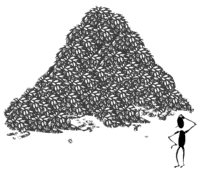
68,264,008 losers
Some people know how
to make the lottery work for them?
Who?
How?
Why?
| Note that science
searches constantly and diligently for disproofs.
Pseudoscience, on the other
hand, lives more in the dreamy world of advertising hype--find a confirming
bit of evidence, and that's good enough. Often, a mere suggestion
is enough: evidence be damned!
This profound oversimplification
of pseudoscientific thinking belongs high on any list of differences between
science and pseudoscience. |
-
Science seeks disproofs.
-
Science separates relevance
from irrelevance.
-
Science effectively deals with
networks of cause and effect.
-
Science thinks in many-dimensional
spaces.
|
Magic is those
things which people do that seem beyond human powers.
Science seems magical because
it's practiced by people who have discovered how to look in certain places
people hadn't thought to look into for all those many millennia (before
Newton's time).
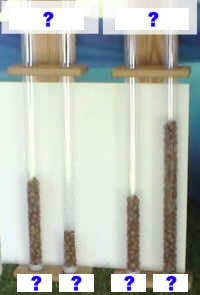
Hundreds of people answered
the question, "Should you stay or switch?" And then they put a filbert
nut into one of the four tubes you see in the picture. They were
betting on something, and one of the pairs of tubes was for "Stay", the
other pair for "Switch." Within each pair one tube was for. "I
won!", the other for, "I lost."
Here's the whole question:
.
A
hustler presents you with three boxes into one of which he places a valuable
prize, but you don't know which one. You get to choose one box and
keep the prize if it's there. You choose, but he doesn't tell you
if you won. Instead, he says to you "I'm going to open one of the
boxes and show you what's inside." He does (and you see that there's
nothing inside), and then says, "Now, would you like to stay with your
first choice, or would you like to switch."
For four years, the hundreds
of filbert plunkers filled the tubes in the same way, the same ratios of
switch to stay (that's determined by how well people saw what was going
on), and the same ratios of win to lose (that's determined by the magic
of statistics).
Question:
How were the four tubes
labeled? |
Human
insight must stretch when trying to imagine the multidimensional.
Lines, but not spaces, are
easy to understand. Spaces tax our perceptions, our imaginations,
our metaphors, and our mathematics.
Protanopic
Normal
 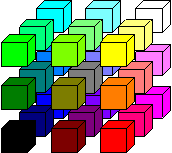
Color
spaces
|
|
A
PBS science program once suggested that this is the way to depict: 1) normal
human color; 2) total colorblindenss; and 3) colorblindness caused by one
type of color cone being missing.
They didn't understand the
dimensions of color. The third picture is one-dimensional,
not two-dimensional! |
 The
2-D color of protanopia (no red-sensitive cones.) The
2-D color of protanopia (no red-sensitive cones.)
.
|



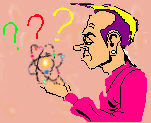

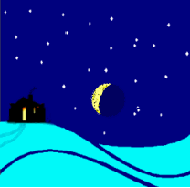






 The
2-D color of protanopia (no red-sensitive cones.)
The
2-D color of protanopia (no red-sensitive cones.)